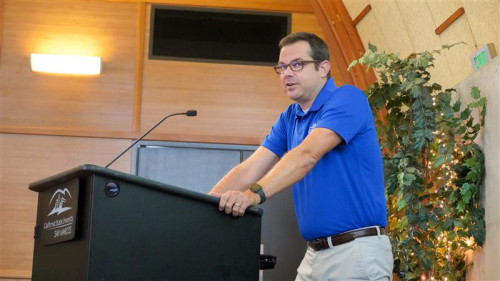 Accreditation Highlights Commitment to Student SuccessCal State San Marcos’ Supplemental Instruction program received accreditation from the International Center for Supplemental Instruction, becoming one of the nine California State University campuses to join the nationwide list. This national recognition confirms that CSUSM’s Supplemental Instruction (SI) program upholds the International Center’s commitment to academic excellence and student success, demonstrating that it meets national standards for quality peer-led learning and support. Vice Provost Mary Oling-Sisay credited the efforts of Adam Petersen, assistant dean of Undergraduate Studies; Evan Smith, director of Learning and Tutoring Services; and Alex Picasso, SI coordinator. She also noted that the recognition would not have been possible without the collaboration and support of faculty partners, including Lenuta Gonzales, Yasmine Sheraft, Robert Iafe and Alexander Buyain, all of whom provided strong recommendation letters to the accrediting committee. Offered through the Learning and Tutoring Services at CSUSM, SI provides students with an opportunity to collaborate with their classmates and deepen their understanding of course content. The goal of a supplemental instruction program is to promote success by positively impacting the way students learn in challenging courses, such as upper-level psychology, physics and speech-learning pathology. Through SI, students can meet with their peers for in-person and online tutoring sessions. SI was created at the University of Missouri-Kansas City, providing a non-remedial approach to learning that supports success by integrating various learning methods tailored to students’ needs. Media Contact Eric Breier, Interim assistant director of editorial and external affairs ebreier@csusm.edu | Office: 760-750-7314
Accreditation Highlights Commitment to Student SuccessCal State San Marcos’ Supplemental Instruction program received accreditation from the International Center for Supplemental Instruction, becoming one of the nine California State University campuses to join the nationwide list. This national recognition confirms that CSUSM’s Supplemental Instruction (SI) program upholds the International Center’s commitment to academic excellence and student success, demonstrating that it meets national standards for quality peer-led learning and support. Vice Provost Mary Oling-Sisay credited the efforts of Adam Petersen, assistant dean of Undergraduate Studies; Evan Smith, director of Learning and Tutoring Services; and Alex Picasso, SI coordinator. She also noted that the recognition would not have been possible without the collaboration and support of faculty partners, including Lenuta Gonzales, Yasmine Sheraft, Robert Iafe and Alexander Buyain, all of whom provided strong recommendation letters to the accrediting committee. Offered through the Learning and Tutoring Services at CSUSM, SI provides students with an opportunity to collaborate with their classmates and deepen their understanding of course content. The goal of a supplemental instruction program is to promote success by positively impacting the way students learn in challenging courses, such as upper-level psychology, physics and speech-learning pathology. Through SI, students can meet with their peers for in-person and online tutoring sessions. SI was created at the University of Missouri-Kansas City, providing a non-remedial approach to learning that supports success by integrating various learning methods tailored to students’ needs. Media Contact Eric Breier, Interim assistant director of editorial and external affairs ebreier@csusm.edu | Office: 760-750-7314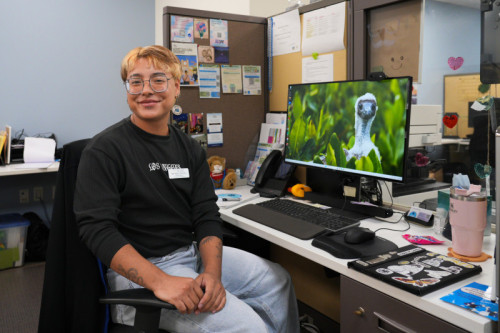 How One Student Transformed Challenges Into ChangeWhen Sol Haro first attended Cal State San Marcos, he felt isolated. Not because of the school – Haro was an active student and involved in campus clubs – but because of a struggle with his identity. As a Mexican American child of a single parent from a low-income household, he felt a level of pressure to find a place where he thought he belonged. This pressure was amplified by Haro’s gender identity as a transgender man. He felt alone on campus — othered — because he rarely saw his identity reflected around him. “I didn’t see myself in my peers or professors,” Haro said. “I always tell people I’m a triple threat because I’m brown, I came from poverty, and I’m trans. A lot of things have happened in my life, so it's hard to find people who relate to me without disclosing all those things.” Haro graduated last spring with a degree in social sciences, and he now works on campus as a basic needs assistant for the Cougar Care Network. The impact of his work on campus earned him the President’s Student Champion Award for Inclusive Excellence and Diversity this year, and he was honored as the winner at the All Peoples Luncheon on Oct. 23. “Every human being has a right to basic needs, and we should not have to suffer to acquire them,” Haro said during his acceptance speech. By his senior year at CSUSM, Haro realized that what was blocking him from connecting with others was the internal shame he carried as a transgender man. With that in mind, he not only began working on self-acceptance but also sought to be a representation of transgender people in higher education that he longed to see. Last academic year, Haro learned about an opening for a civic engagement ambassador through Service Learning and Civic Engagement. He was drawn in by the office’s advocacy and decided to apply. In his application, he stated that while he is committed to neutrality, his passion is in helping those from underrepresented communities. Soon after becoming an ambassador, Haro began creating a comprehensive and easy-to-understand CalFresh guide for CSUSM students. After going through the challenging and confusing process of applying for CalFresh as a transgender man, Haro used inspiration from his mother to help motivate him to push for a change. “My mom was like, ‘If you don’t like something, then do something about it. No one’s gonna do it for you,’ ” Haro said. The guide is a tool to help all students, but it also highlights issues that transgender students seeking basic needs might encounter, such as what to do when their preferred name doesn’t match their legal name. This was not only a way for Haro to help other students on campus, but also a tool for self-empowerment. “I wanted to create this guide for every student, because getting basic needs is what you deserve. It shouldn’t be so difficult,” Haro said. While his guide focuses on the experiences of transgender, undocumented and mixed-status students, it is for everyone, and Haro encourages all students to apply for CalFresh. “More than half of our students probably qualify for CalFresh, and they’re not doing it because they either don’t know what it is or they have some shame around it,” Haro said. “But if you need that help, there’s no shame in receiving it. You don’t need to suffer for your basic needs.” Breaking the stigma around public assistance programs like CalFresh was also one of Haro’s goals with the CalFresh guide. He saw the shame his mother felt in using programs like CalFresh, Section 8 and Medi-Cal. That shame was amplified by how people reacted when his mom pulled out her benefits card at the grocery store. He said he doesn’t want to see other people struggle the way his mother did just to fulfill their basic needs. “Your physical health, your mental health, food impacts both of those,” he said. “Statistics show that when you have a lack of basic needs, you’re not showing up to class and your grades are dropping. How are you supposed to thrive in school and get your degree if all you’re thinking about is how hungry you are?” Haro has found that seeking assistance can be empowering rather than bringing shame. Creating the guide wasn’t easy. The CalFresh application contains technical language that can be hard for some to interpret. It required cross-referencing documents, taking notes while completing his own application and interviews, and spending hours on research. Every conversation Haro had with a CalFresh representative during this process became a valuable tool to help students. “I wanted the guide to be empowering for people,” Haro said. “Yes, the process is difficult, but once you get the benefits, it’s totally worth it.” Along with the CalFresh guide, Haro has also collaborated with various university departments and student organizations to raise awareness about social justice, voting rights and public policy issues. In 2024, he won the Innovation Hub’s Social Innovation Challenge for his proposal to redesign CSUSM’s commuter hub into a lounge focused on students’ comfort and basic needs. Last year, Haro also contributed artwork that centered on transgender joy and the normalization of transgender identities on campus. The picture, which is on display in the University Student Union, features Haro shirtless, three months after his top surgery. Haro described being open about his transness as “so incredibly scary but so empowering” and “filled with self-love.” As Haro continues his work with the Cougar Care Network, he’s thinking beyond the campus community. What began as a way to navigate his own challenges is now opening doors for others, a step toward lasting change built on lived experience and compassion. “This is representation,” Haro said. “I’m happy, I’m thriving and I’m filled with joy because of who I am.” Media Contact Eric Breier, Interim Assistant Director of Editorial and External Affairs ebreier@csusm.edu | Office: 760-750-7314
How One Student Transformed Challenges Into ChangeWhen Sol Haro first attended Cal State San Marcos, he felt isolated. Not because of the school – Haro was an active student and involved in campus clubs – but because of a struggle with his identity. As a Mexican American child of a single parent from a low-income household, he felt a level of pressure to find a place where he thought he belonged. This pressure was amplified by Haro’s gender identity as a transgender man. He felt alone on campus — othered — because he rarely saw his identity reflected around him. “I didn’t see myself in my peers or professors,” Haro said. “I always tell people I’m a triple threat because I’m brown, I came from poverty, and I’m trans. A lot of things have happened in my life, so it's hard to find people who relate to me without disclosing all those things.” Haro graduated last spring with a degree in social sciences, and he now works on campus as a basic needs assistant for the Cougar Care Network. The impact of his work on campus earned him the President’s Student Champion Award for Inclusive Excellence and Diversity this year, and he was honored as the winner at the All Peoples Luncheon on Oct. 23. “Every human being has a right to basic needs, and we should not have to suffer to acquire them,” Haro said during his acceptance speech. By his senior year at CSUSM, Haro realized that what was blocking him from connecting with others was the internal shame he carried as a transgender man. With that in mind, he not only began working on self-acceptance but also sought to be a representation of transgender people in higher education that he longed to see. Last academic year, Haro learned about an opening for a civic engagement ambassador through Service Learning and Civic Engagement. He was drawn in by the office’s advocacy and decided to apply. In his application, he stated that while he is committed to neutrality, his passion is in helping those from underrepresented communities. Soon after becoming an ambassador, Haro began creating a comprehensive and easy-to-understand CalFresh guide for CSUSM students. After going through the challenging and confusing process of applying for CalFresh as a transgender man, Haro used inspiration from his mother to help motivate him to push for a change. “My mom was like, ‘If you don’t like something, then do something about it. No one’s gonna do it for you,’ ” Haro said. The guide is a tool to help all students, but it also highlights issues that transgender students seeking basic needs might encounter, such as what to do when their preferred name doesn’t match their legal name. This was not only a way for Haro to help other students on campus, but also a tool for self-empowerment. “I wanted to create this guide for every student, because getting basic needs is what you deserve. It shouldn’t be so difficult,” Haro said. While his guide focuses on the experiences of transgender, undocumented and mixed-status students, it is for everyone, and Haro encourages all students to apply for CalFresh. “More than half of our students probably qualify for CalFresh, and they’re not doing it because they either don’t know what it is or they have some shame around it,” Haro said. “But if you need that help, there’s no shame in receiving it. You don’t need to suffer for your basic needs.” Breaking the stigma around public assistance programs like CalFresh was also one of Haro’s goals with the CalFresh guide. He saw the shame his mother felt in using programs like CalFresh, Section 8 and Medi-Cal. That shame was amplified by how people reacted when his mom pulled out her benefits card at the grocery store. He said he doesn’t want to see other people struggle the way his mother did just to fulfill their basic needs. “Your physical health, your mental health, food impacts both of those,” he said. “Statistics show that when you have a lack of basic needs, you’re not showing up to class and your grades are dropping. How are you supposed to thrive in school and get your degree if all you’re thinking about is how hungry you are?” Haro has found that seeking assistance can be empowering rather than bringing shame. Creating the guide wasn’t easy. The CalFresh application contains technical language that can be hard for some to interpret. It required cross-referencing documents, taking notes while completing his own application and interviews, and spending hours on research. Every conversation Haro had with a CalFresh representative during this process became a valuable tool to help students. “I wanted the guide to be empowering for people,” Haro said. “Yes, the process is difficult, but once you get the benefits, it’s totally worth it.” Along with the CalFresh guide, Haro has also collaborated with various university departments and student organizations to raise awareness about social justice, voting rights and public policy issues. In 2024, he won the Innovation Hub’s Social Innovation Challenge for his proposal to redesign CSUSM’s commuter hub into a lounge focused on students’ comfort and basic needs. Last year, Haro also contributed artwork that centered on transgender joy and the normalization of transgender identities on campus. The picture, which is on display in the University Student Union, features Haro shirtless, three months after his top surgery. Haro described being open about his transness as “so incredibly scary but so empowering” and “filled with self-love.” As Haro continues his work with the Cougar Care Network, he’s thinking beyond the campus community. What began as a way to navigate his own challenges is now opening doors for others, a step toward lasting change built on lived experience and compassion. “This is representation,” Haro said. “I’m happy, I’m thriving and I’m filled with joy because of who I am.” Media Contact Eric Breier, Interim Assistant Director of Editorial and External Affairs ebreier@csusm.edu | Office: 760-750-7314
- 'Accidental Archivist' Helps Mexican Communities Learn Their HistoryFernando Amador likes to call himself an accidental archivist. Long before he was an assistant professor of history at Cal State San Marcos, Amador was a doctoral student at New York’s Stony Brook University who was doing field work for his dissertation in Mexico. Hoping to comb through the historical archive of the people of Temacapulin, a small town northeast of Guadalajara, he was surprised to learn that they didn’t have one. What they had was thousands of documents piled haphazardly into boxes, all too vulnerable to environmental damage in the event of, say, a flood. Helping to organize the town’s historical record wasn’t part of Amador’s dissertation, but his conscience wouldn’t allow him to return to New York with the papers in such disarray. So he gave himself a crash course in archival studies – which traditionally is more the domain of librarians – and, with the aid of some volunteers from the community, he led an effort in 2022 to whip the archive into shape. During the three months that Amador was in Temacapulin, word of his project spread to neighboring towns. It just so happened that the Indigenous community of San Juan de la Laguna (La Laguna for short) was in the midst of an effort to organize its own historical documents. The people behind it invited Amador to town, and he discovered that this project involved almost twice as many documents (nearly 20,000), stretching back more than a century earlier, to the late 1600s. “When I saw that this project was a different beast compared to the first one,” Amador said, “I knew we needed more resources and more help.” After a hiatus of a few years – during which he finished his dissertation, earned his Ph.D. from Stony Brook and was hired by CSUSM – Amador finally found himself in position to revisit the La Laguna archive. Last spring, he received a $15,000 grant from the Endangered Archives Programme of the British Library, the largest library in the world and the home of such storied pieces as the original Magna Carta. Over the summer, Amador spent two weeks in La Laguna, and the funding not only paid for his trip, but allowed him to purchase laptops and hire and train five members of the community as full-time workers on the 10-week project. “I never imagined I’d end up in this field, but it truly offers incredible opportunities,” he said. “I get to meet new people and develop skills in an area where, surprisingly, historians often know nothing about – archives. You’d think that’s odd, like chemists not learning about the equipment in their own labs. Now that I’m doing this work, I realize just how striking that gap is between what historians do and the archival side of their profession.” Amador streamlined and accelerated a process that had progressed in fits and starts since his initial visit to La Laguna three years earlier. In helping gather the materials, he found that many of them were stored in unfavorable conditions, such as sacks, cardboard boxes and bound together with string. Many also were marked with water stains. As the group surveyed and created an inventory of the documents, they encountered samples both mundane (countless tax receipts) and captivating. One example was a paper record of a legal battle in the early 20th century between a town resident and an immigrant from Lebanon. “How did a man from Lebanon end up in this little town?” Amador said. “That whole story sounds fascinating. Discovering history through these documents is, in a way, truly thrilling.” Beyond just the work itself, the biggest challenge that Amador faced was gaining the trust of an Indigenous community that traditionally has had a fraught relationship with the local government and the outside world at large. “With me coming from the United States, people wondered, ‘What are his priorities? Why is he here helping us? What’s in it for him?’ ” he said. “It really came down to open communication – reassuring them that I’m doing this because I love the work and involving them in the process as much as possible.” As the grant-funded initiative wraps up this fall, Amador is considering a return to La Laguna in January to review the finished product in person. And as the domino effect continues, the second project might lead to a third one. Another nearby Indigenous community heard about the work Amador led in La Laguna and requested his support for its archival project, which features more digitized material instead of old, yellowing papers. For that one, which remains in the preliminary stages, he is coordinating with classically trained archivists, namely Sean Visintainer and Jennifer Ho of the CSUSM University Library. He’s also talking with Visintainer and Ho about the possibility of introducing and teaching a history course in archival studies. “I really did stumble into this type of work. I still am even hesitant to call myself an archivist,” Amador said. “I'm learning so much, and there's still so much for me to learn. But it does seem like this is where my career is headed – bringing archival studies and history together in some way.” Media Contact Brian Hiro, Communications Specialist bhiro@csusm.edu | Office: 760-750-7306
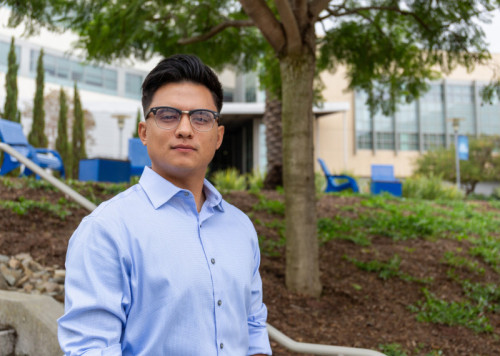
- Local Folk Musician Donates Archive to CSUSM LibraryA local folk musician who has been performing for more than a half-century and was heavily influenced by Woody Guthrie has donated his personal archive to Cal State San Marcos. The Special Collections department of the CSUSM University Library recently received the archive of Joel Rafael, a singer-songwriter from San Diego County who has been making music with the Joel Rafael Band and as a solo artist for over 50 years. Rafael began performing in showcases and small clubs around Southern California in the early 1970s. He opened shows throughout the southwestern United States for artists including Crosby, Stills and Nash, Sheryl Crow, Laura Nyro, Taj Mahal, Iris DeMent, Emmylou Harris and John Lee Hooker. The legendary Jackson Browne wrote of Rafael: “Joel Rafael’s songs are filled with passion and compassion; passion for social justice and compassion for those among us who have to struggle for a place at the table of American prosperity. His voice is unmistakably his own – big, warm and strong – and a conductor for the human emotions that connect us all.” No influence is more obvious in Rafael’s work than that of Guthrie. Rafael has been a featured performer at the Woody Guthrie Folk Festival in Oklahoma for all but one of its 28 years, and he has five “co-writes” with Guthrie using lyrics given to him by Guthrie’s daughter, Nora. Rafael and his wife, Lauren (a CSUSM alumna), were referred to Special Collections to discuss the disposition of his archive last spring by CSUSM music professor Merryl Goldberg. After an assessment of the collection, Rafael made the commitment to donate his archive to the CSUSM Library; about one-third of the physical materials have been moved to the library to date. “For a few years now, I’ve thought about and wondered what will become of my life’s work spanning 60 years," Rafael said. "I am honored to have found a permanent home for my archives in the Kellogg Library Special Collections at Cal State San Marcos. North San Diego County has been my home for more than half a century. I have watched the evolution of the campus since its founding in 1989. I am heartened that the CSUSM core values of inclusion, culture and stewardship align with my own. Knowing that my work will be protected and available to the public gives me a feeling of peace, resolution and gratitude.” The collection includes master recordings in various formats; documentation of all of Rafael’s (and collaborators’) performances and contracts; scrapbooks and news articles of his life and musical history; flyers, posters and photographs for/of performances and festivals; and fan interactions including letters, email messages and social media posts. “I feel fortunate to know Joel and Lauren and to have the opportunity to steward Joel’s collection," said Jen Fabbi, a Special Collections librarian who has been working with the Rafaels to acquire the collection. “Joel has dedicated his life to social justice and activism through music, and that commitment, along with his talent and persistence, shines throughout this collection. I am excited for students and scholars to have access to it.” Special Collections recently recorded the first part of an oral history interview with Rafael, in which he discusses his early musical influences, his participation in the 1960s counterculture movement and the beginnings of his success in the music industry. A treasure trove of information about Rafael and his music can be found at https://joelrafael.com. For more info, contact Fabbi at jfabbi@csusm.edu. The University Archives and Special Collections staff work closely with donors to identify materials of research interest to be preserved. Although not all papers and records fall within the collecting scope of the unit, please send us an email to discuss a potential donation at archives@csusm.edu. In addition, you can support the mission of Special Collections to preserve North County history by making a donation.
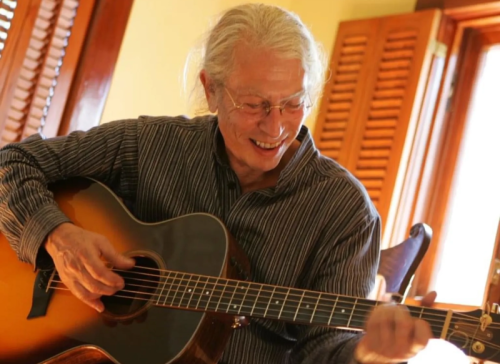
- Kinesiology Student's Inspiring Journey from Foster Care to GraduationSometimes even the smallest things can be taken for granted. Many students have never had to worry about affording a meal or squeezing in hours of sleep between their work and school schedules, but that’s not the case for Alexus Foster. Alexus was in and out of the foster care system from the time she was 2 years old. She has lived in countless different states and attended 17 different schools. However, with the help of Cal State San Marcos’ ACE Scholars Services program she is graduating this winter with a bachelor’s degree in kinesiology and a minor in dance. “ACE has had a really big impact on me,” said Alexus, “and for that I'm very grateful.” Alexus always knew she wanted to pursue higher education because she felt it would help her avoid the challenges her mother faced. Pregnant at 15 years old, Alexus’ mother struggled to raise a child. After her mom was kicked out of Alexus’ grandmother’s house, Alexus was sent to New York to live with her great grandfather. Her mother booked a return flight to California, and Alexus’s childhood was on a new course. Growing up, Alexus experienced the hardships of persistent custody battles and court-mandated counseling therapy. She was constantly moving among different households and family members. Alexus is 29 years old and the oldest of six siblings (the youngest being 15). Alexus was 16 when her siblings entered the foster care system for the first time. Alexus hoped to shield them from the reality that would be foster care. But Alexus and her siblings were apart for almost a year, which was one of the hardest times of her life. Alexus and her siblings have always had a strong bond, celebrating every holiday together at their grandparents’ house growing up. “I love my siblings, and I just want to be the best big sister they could have. If they ever need anything, they can call me,” Alexus said. As complicated as Alexus’ life was growing up, additional struggles began to arise as an adult. After moving out of her mom’s house at 19, trying to complete her degree while managing two jobs to afford her rent became a strenuous task. Alexus was attending Riverside Community College when she learned about ACE Scholars Services. It’s a program that would soon change Alexus’ life for the better. ACE Scholars Services helps former foster youth pursue higher education by providing services and support systems. ACE knows that helping foster youth earn a degree will provide them the tools and self-determination they need to succeed later in life. That’s been the case for Alexus. Alexus worked the overnight shift at the Ontario airport, ending her shift at 7 a.m., then driving from Rancho Cucamonga for her hour-plus commute to campus. When she hadn’t slept all night, ACE provided her a space to get rest during the day. When she didn’t have enough money to afford food or school supplies, ACE was there. When her car broke down, ACE was there. In October 2024, Alexus lost her job and was evicted, marking the start of a difficult time. However, ACE was once again there to help. “The support that I get from ACE, everything that I've been able to get through in my life is because ACE has always helped me, especially Leigh,” Alexus said. Leigh Quijada has been the director of ACE Scholars Services for the last two years after previously working with the program for 13 years as a counselor. She has played a huge role in Alexus’ life by not only guiding her but helping her get through every obstacle she has faced. “Persistence” and “resilience” were the two words Leigh used to describe Alexus. “I think Alexus might be the only student I’ve had who has been through it all and overcome everything," Leigh said. Leigh has been there for Alexus since the start of her journey at CSUSM and has watched her grow. When Alexus was put on academic probation last year because she had to prioritize going to work to pay her bills rather than attending class, Leigh did everything in her power and helped Alexus get re-enrolled. “She is probably one of the biggest people in my life,” Alexus said. “I wouldn’t be getting my bachelor's without Leigh; she’s definitely my rock.” After the difficult years Alexus endured as a foster child, she is graduating this winter and moving to Texas to begin her master’s studies in kinesiology. She has played sports since she was young and hopes to continue her love for that field as an athletic trainer for professional athletes. “People don't know what I've been through to get to this point,” Alexus said. “It's going to be a very big accomplishment.” Media Contact Eric Breier, Interim Assistant Director of Editorial and External Affairs ebreier@csusm.edu | Office: 760-750-7314
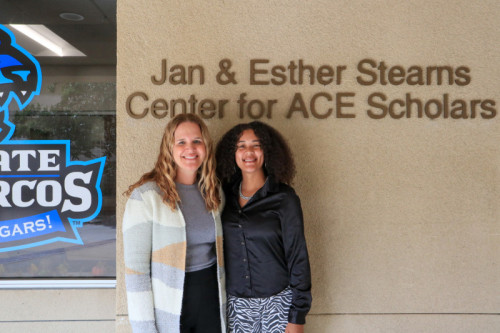
- Photo Highlights From Cougar MadnessCal State San Marcos students filled The Sports Center on Oct. 15 for Cougar Madness, the university's annual event celebrating the beginning of the college basketball season. The men's basketball team opens the regular season by hosting Concordia University on Nov. 14. The women's team also opens Nov. 14 with a home game against Azusa Pacific. Visit the athletics website for complete schedules for both teams. Relive some of the event highlights in the Cougar Madness photo slideshow. Media Contact Eric Breier, Interim Assistant Director of Editorial and External Affairs ebreier@csusm.edu | Office: 760-750-7314
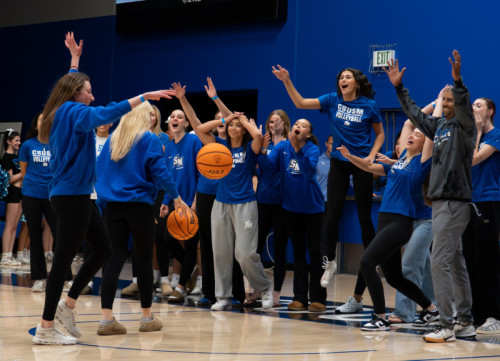
- Seeking Healthy Adults to Participate in Exercise Training StudyHealthy adults ages 18 - 64 years old who exercise less than two days per week are needed to participate in an exercise training study conducted at CSUSM. Participants will complete 2 sessions per week of exercise for 12 weeks, during which time you must maintain your lifestyle. Upon completion of the study, you will be paid $250.00. Please email Dr. Todd A. Astorino, Dept. of Kinesiology, at astorino@csusm.edu for more information about the study.

- Celebrating Native American Heritage MonthThroughout November, Cal State San Marcos will be celebrating and recognizing the contributions of American Indians with a series of special events as part of Native American Heritage Month. CSUSM invites all members of the campus community to participate in the following events. Pow Wow Dance Workshops Tuesday, Nov. 4, 11, 18, 6-8 p.m., Serenity Circle Learn the history, meaning and movement of pow wow dancing in this interactive workshop led by Kiara Flores. Celebrate culture, community and tradition through dance. Chow on Deck: United in Service - A Celebration of Native American Veterans Tuesday, Nov. 4, noon, Epstein Family Veterans Center Deck American Indian Student Center NAHM Kick-Off Event Friday, Nov. 7, 5-8 p.m., USU Amphitheater CSUSM’s American Indian Student Center invites the campus community to celebrate the start of Native American Heritage Month. The evening will include traditional bird singing, pow wow dancing and storytelling along with food prepared by Chef Carmen of Island Smoke N’ Grill. CSUSM 2nd Annual Social Gathering Thursday, Nov. 20, 3-6:30 p.m., Mangrum Track & Field The event will feature traditional bird singers and dancers, along with local vendors showcasing Native art and jewelry. All are welcome to join in this celebration of community and culture. Media Contact Eric Breier, Interim Assistant Director of Editorial and External Affairs ebreier@csusm.edu | Office: 760-750-7314
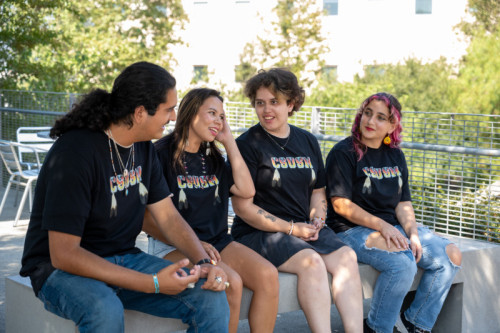
- Alumna Finds Purpose in Advocacy for Native Children and FamiliesAs Maya Goodblanket reflects on her time as a student, she vividly remembers the day she found the California Indian Culture and Sovereignty Center at Cal State San Marcos. Goodblanket was nervous about checking out the CICSC. She didn’t know anyone on campus and was unsure about going inside. But she mustered the courage to open the door, and all of her anxiety disappeared as she was instantly welcomed. Little did she know that she was meeting mentors that day who would help her achieve the career she has today. Through intentional support from faculty and staff and inclusive spaces like the CICSC, CSUSM equips students to lead with identity, purpose and impact. “I was looking for that connection to my culture, and I found it on campus,” said Goodblanket, who received a bachelor’s degree in psychological science and a Master of Social Work at CSUSM. “I'm an out-of-state Native. My tribe is from Oklahoma, so I always am searching to reconnect with tribal communities and tribal culture.” Goodblanket, a member of the Cheyenne and Arapaho Tribes of Oklahoma, serves as an Indian Child Welfare Act (ICWA) court advocate for the Valley Center-based Indian Health Council, which provides health and wellness services for American Indian communities in north San Diego County. Any families involved in a child welfare case, such as a juvenile dependency proceeding, can rely on Goodblanket for support. "I work with moms and dads who are struggling with a variety of challenges," Goodblanket said. "One is substance abuse. My job is to support families in doing what they need to do to reunite with their kids if they’re not currently in a place to have them back. I also work with caregivers and family members who have taken placement of the children." Goodblanket’s cultural connection is at the heart of her advocacy. Under the ICWA, child welfare agencies must prioritize placing American Indian children with relatives or within their tribal communities whenever possible. “Natives are still removed at a disproportionate rate by child welfare services,” Goodblanket said. "When children are disconnected from their culture, their long-term outcomes aren't as strong as those who remain connected. That’s why the cultural component is such a vital part of the work I do." As a student, Goodblanket participated in CSUSM’s inaugural “Beyond the Stereotype" campaign to raise awareness about cultural appropriation and the harm caused by stereotypes. Goodblanket and other students were featured on posters across campus that challenged common misconceptions about underrepresented groups. She emphasized the need to raise awareness about issues like missing and murdered Indigenous women and the harmful sexualization of Native women through stereotypes and costumes, which contribute to broader societal perceptions and injustice. "Maya demonstrates how education driven by purpose and cultural knowledge creates lasting change,” said Joely Proudfit, chair of the American Indian studies department and director of the CICSC. “CSUSM remains grateful for her transformative impact, particularly through her leadership in the award-winning 'Beyond the Stereotype' campaign, where she challenged cultural appropriation with authenticity and understanding.” Goodblanket didn’t expect the campaign to have such a large impact, and its widespread presence across campus was surprising but meaningful. "I think it was really important to take that stance and just stand up,” she said. “And I think that's what college is all about.” Media Contact Eric Breier, Interim Assistant Director of Editorial and External Affairs ebreier@csusm.edu | Office: 760-750-7314
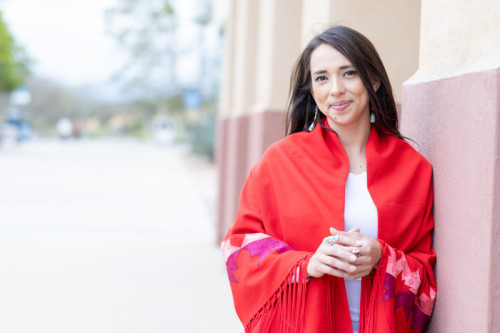
- Human Development Students Rediscover the Power of PlayWhen Cal State San Marcos human development instructor Kathy Fuller gathered her students for class recently, she didn’t hand out a lecture outline or cue up a PowerPoint. Instead, she invited them to The Makery, a hands-on, creative space in Kellogg Library, and gave them a simple instruction: play. She encouraged them to tinker, build, explore and let curiosity lead the way. It might have looked like fun and games from the outside, but for Fuller, the experience was a deliberate lesson in rediscovering something that many adults forget. “In our adult lives, we lose touch with play,” Fuller said. “But rediscovering it isn’t just about having fun – it’s a way to connect, build trust and spark creativity.” For Fuller’s human development students – most of whom are preparing for careers as counselors, educators or community advocates – the exercise carried a deeper meaning. Play, she explained, is a bridge to empathy and understanding, essential tools for working with people who are coping with stress, trauma or isolation. “Play builds trust, opens pathways for expression and helps people feel safe,” Fuller said. “It reminds us that learning and healing don’t always have to be serious. Sometimes they can be spontaneous.” Among those who found the experience unexpectedly refreshing was Daniel Lopez, a human development major and student ambassador for the College of Education, Health and Human Services. “Sometimes we get so focused on grades and deadlines that we forget how to just explore and enjoy the process,” Lopez said. “This experience reminded me that play isn’t just for kids – it’s a mindset that helps us stay creative, connect with others and bring joy into the work we’ll be doing in our future careers.” Fuller’s playful experiment also reflects the broader mission of CEHHS, which emphasizes holistic, human-centered approaches to learning and practice. In the end, the lesson was simple but profound: There’s room and real need for play in the serious work of helping others. Media Contact Brian Hiro, Communications Specialist bhiro@csusm.edu | Office: 760-750-7306
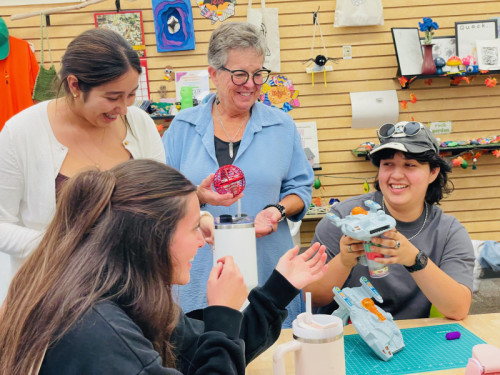
- After Surviving Battle With Hep C, Alumnus Now Helps Others Do SameRichard Jaenisch had received a death sentence at age 12. Diagnosed with hepatitis C, very unusual for a child that young, Jaenisch had been told by doctors that if he didn’t get a liver transplant, he wouldn’t live past 30. That disturbing prediction had hung over his adolescence and early adulthood like a black cloud, casting a pall over every doctor’s appointment and health episode. Now here it was, 2016, the year when Jaenisch turned 30, and the doctor’s assessment was feeling eerily prescient. He had not been able to procure a new liver, and his condition was deteriorating rapidly. To borrow his gallows humor, he was as “yellow as a Simpsons character” because of jaundice. He collectively spent more than six weeks in the hospital as a result of various complications from end-stage liver disease. “Every single day that year, I had a 30 to 60 percent chance of dying,” Jaenisch said. That he didn’t die, that he received a liver transplant on Dec. 3 (only a few months before his 31st birthday), Jaenisch considers to be nothing short of a miracle. Given the gift of fresh life in his fourth decade, he elected to devote it to ensuring that no one else has to go through the ordeal that he did. Three years later, Jaenisch returned to Cal State San Marcos – the university where he had earned a bachelor’s degree in social sciences in 2008 – to pursue a master’s in public health. He now works as the director of education and outreach for Open Biopharma Research and Training Institute, a Carlsbad nonprofit whose mission is to reduce the cost of pharmaceuticals like the ones that helped keep him alive while he waited for the miracle liver. More significantly, Jaenisch is a tireless patient advocate, dedicating countless hours to multiple organizations that share a goal of ending the scourge of hep C. He has transformed adversity into community impact, leveraging his CSUSM education to improve lives and strengthen public health across the state. “Richard is truly a special person,” said Carrie Frenette, the executive director of global medical affairs for Gilead Sciences and Jaenisch’s liver doctor for nine years starting in 2012. “I can’t think of anyone else who has so much expertise and understanding in their medical problems, advocates for themselves and then goes on to advocate for others. Honestly, it made it so easy to care for him, and it made it mean even more when he got his transplant and was healthy again.” 'I don’t know how you are still alive...’ It all started with brown pee. Jaenisch was a normal suburban kid growing up in Rancho Bernardo. When he was 12, his parents signed him up for a summer tennis camp. It was a sweltering day and he didn’t drink a lot of water; when he returned home and went to the bathroom, his urine was dark. His father took him to Rady Children’s Hospital, where he was put through a battery of tests on his kidneys, spleen and liver. The diagnosis of hepatitis C virus (HCV) stunned them, as did the subsequent wallop of bad news: After the rest of the family was tested, it was discovered that he contracted the infection at birth from his mother, who also was found to have HCV. Nothing, though, could have prepared Jaenisch for the haunting prognostication of liver transplant or death. “That shook me to my core,” he said. “My childhood was fundamentally changed. And my mom heard that, too, because she was in the room. It’s awkward hearing your own future from your child’s diagnosis. We shared a very odd relationship in that way.” At the time, in the late 1990s, there was no cure for HCV, only experimental treatments with low success rates and punishing side effects. Jaenisch’s mom started the drugs – interferon and ribavirin – almost immediately, but as a child, Jaenisch wasn’t eligible. The primary impact of HCV on his teenage years was that he was forced to cease participation in all sports and PE classes (because the disease can be transmitted through blood) and he began to suffer from a type of brain fog named hepatic encephalopathy (HE). After graduating from Rancho Bernardo High School, he attended Palomar College for two years, then transferred to CSUSM. There, he threw himself into classes in economics, history and political science – not only to satiate his hunger for knowledge but also to distract himself from the fear that constantly lingered at the back of his mind. “I wanted to live as much of my life as I could before everything hit the fan,” Jaenisch said. “Because I knew what was coming. When someone gives you a death sentence, you remember it, to say the least.” Jaenisch graduated from CSUSM in December 2008. Only a few weeks later, the trouble started. He attempted to begin the same treatment program his mom had undergone, but because of denials by his mom's employer, he wasn’t able to do so for about nine months. Once the snags finally had been resolved, the 12-week regimen of interferon and ribavirin didn’t work. He experienced all the negative effects of the drugs – in his case, painful inflammation and wild emotional swings – without any decrease in his body’s viral load. A second round at double the dosage early in 2010 similarly yielded no response. By this point, more than a decade after his HCV first had been discovered, Jaenisch had descended to the most serious stage on the scale that measures liver fibrosis, or scarring. F0 equates to no fibrosis, F1 is mild, F2 is moderate, and so on. He was at F4, which indicates the presence of cirrhosis, a condition in which the liver is extensively scarred and permanently damaged. Jaenisch had reached the dreaded end-stage liver disease, which essentially meant that the ticking of his clock was only accelerating. All the while, he was encountering roadblocks in his career. He had hoped to enter the niche field of traffic economics, but graduating into the Great Recession scuttled that plan. For a time, he held a job in tech support that he found unfulfilling. The work that did bring Jaenisch joy was for a group that offered before- and after-school services for elementary and middle schools in the Poway district of his youth. He envisioned a long-term future in that field but was stymied by both the ailing economy (which led to layoffs) and his illness (he claims he was a victim of disability discrimination but chose to spend his remaining time trying to get better rather than pursue a case.) While he tried to piece together enough work to retain his vital health insurance, Jaenisch’s health continued to deteriorate. In 2014, two years into her stint as his liver doctor, Frenette proffered a grim evaluation. “She said, ‘I don’t know how you are still alive with this liver,’ ” Jaenisch recalled. “She showed me pictures and was like, ‘Your liver is an old shoe. It is not doing what it’s supposed to do. But you’re still functioning.’ ” Every moment of optimism, it seemed, was followed by a stroke of misfortune. He began taking a new drug called Sovaldi (a direct-acting antiviral, or DAA) that was considered a game-changer for HCV patients in that it had an 86% cure rate in six months. Sure enough, Jaenisch’s viral load was approaching zero and his liver was curing. But then he contracted a C. diff bacterial infection (the suspect: spoiled food from a restaurant), which caused acute liver failure and brought his HVC roaring back. He later tried another second-generation DAA – Harvoni – that sounded promising but failed in the last week of treatment. As his liver continued to deteriorate, in 2016 he became too sick for treatment and, following a now-common hospitalization, an ER physician gave him outdated medical advice, which resulted in a case of sepsis that nearly killed him. End-stage liver disease is typically a rapid descent lasting as little as two years. For Jaenisch, it was an eight-year slog, from age 22 to 30. “He was in and out of the hospital multiple times, and he nearly didn’t make it to transplant multiple times,” Frenette said. “I can’t imagine anyone going through it with the courage and strength that he did.” Even after the liver transplant, Jaenisch wasn’t out of the woods. The operation addressed the issue of the failing liver, but it didn’t eradicate the HCV (the virus lives in the bloodstream). Frenette advised a treatment plan of Sovaldi, Zepatier and ribavirin, and that pharmaceutical concoction proved to be a magical formula. In September 2017, 18 years after the fateful diagnosis, Jaenisch was cured. “Honestly, I cried,” Frenette said. “He had been through so much, and to finally get rid of this awful virus that he had lived with his entire life and had caused his liver to fail … I don’t have words.” ‘I have to be more than a self-advocate' It was during one of his dozens of hospital stays that Jaenisch decided on the next course of his life, provided he would live long enough to choose. In the fall of 2014, he had been admitted to Sharp Memorial Hospital after the HCV returned via his C. diff infection. His medical team was struggling to lower his levels of bilirubin, a substance found in bile that was causing jaundice, the yellowing of the skin now so familiar to Jaenisch. He knew that ultraviolet rays help break down bilirubin, so he convinced the nurses to bring him outside for an hour a day at peak sun. As he had theorized, his bilirubin numbers declined. “It was at that point where I was like, ‘I have to be more than a self-advocate. If I can survive through transplant, I need to go to a Master of Public Health program,’ ” Jaenisch said. “I realized that that path would help me better understand how to become an advocate not only for myself but also for others.” His commitment would be nurtured in an environment like CSUSM, as he was accepted into its accelerated MPH program. His time back at the university overlapped with the pandemic, which he took advantage of by choosing as his thesis topic the emergency use authorization of COVID-19 tests. “He was very inquisitive and passionate,” said Asherlev Santos, an associate professor of public health and Jaenisch’s thesis adviser. “Sometimes that passion was more visible than the evidence of the inquiry, but all came from a place of helping others in some sort of need. He used his personal and professional experience to spur on what he did for his MPH degree.” His master’s allowed him to land his job at Open Biopharma, but it’s passion that mostly fuels Jaenisch in his advocacy connected to HCV. In 2016, while his body was still racked with the disease, he traveled to Sacramento with an organization known as CalHEP to talk to state legislators and raise awareness about viral hepatitis. The next year, when Congress was preparing to vote on a bill to repeal the Affordable Care Act, Jaenisch enlisted in the fight. He told his story of overcoming HCV in half a dozen TV interviews, worked at a call center, wrote letters – he did so much that the American Liver Foundation named him its liver champion of the year. “I wanted to preserve the things that help people get access to health care,” he said. “Because to me, it saved my life.” He also has volunteered for state and local groups such as End the Epidemics, the California Department of Public Health and the Eliminate Hepatitis C San Diego County Initiative. Their shared objective (in line with a goal established by the World Health Organization) is to eliminate hep C by 2030, which means a reduction of new infections by 90% and deaths by 65%. And the barriers are much lower than they used to be. Jaenisch says his family spent hundreds of thousands of dollars on treatment and other expenses to keep him alive. Today, treatment could run as cheap as a few hundred dollars, and that’s for more effective drugs, too. “I was raised in a middle-class suburban household, and I wouldn’t have known I had hep C if I didn’t pee a brown color,” Jaenisch said. “I’ve always maintained that I think we’re missing a lot of people, and I keep trying to push for us to find them and knock this virus out. We’re taking a lot of steps, and eventually we’ll get there.” Thanks to Jaenisch’s focus on access and innovation, those steps are becoming strides – toward a healthier, more equitable future for all. Media Contact Brian Hiro, Communications Specialist bhiro@csusm.edu | Office: 760-750-7306
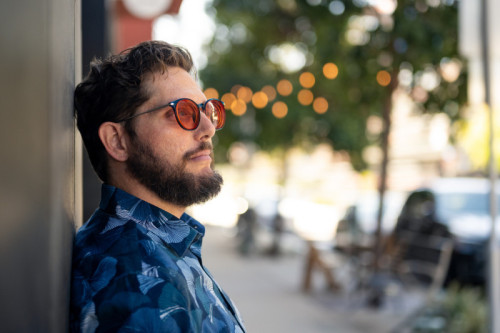
- Attend Campus Webinar for Information on AB 481 Regulated Equipment ReportAs part of the university's commitment to transparency and open communication, the University Police Department (UPD) will host a webinar on Thursday, Oct. 30 at noon via Zoom (https://csusm.zoom.us/j/83186146403) . The Zoom meeting ID is 831 8614 6403. This webinar will provide information from the annual AB 481 Regulated Equipment report. Every year, agencies must report any military equipment used as part of their operations. This webinar is open to all CSUSM students, faculty and staff. No registration is required. For more about UPD policies, contact information and other campus services, visit www.csusm.edu/police.

- MBA Graduate Builds Meaningful Career Helping Domestic Violence SurvivorsAs co-executive director of Kathy’s Legacy Foundation, Alex Lutz will tell you that no two days are ever the same. One moment she’s assembling raffle baskets, the next she’s reviewing financial statements. “It’s almost like you could take a Fully Employed MBA class schedule and go, ‘OK, yep, you’ve tapped finance, you’ve tapped accounting, marketing, leadership,’ ” Lutz said. “Somehow, I have to wear one of those hats at any given point in my job.” Founded in the wake of a tragic act of domestic violence, Kathy’s Legacy Foundation honors the memory of Kathy Scharbarth, who was murdered by her ex-boyfriend in 2011. The nonprofit supports children and pets impacted by domestic violence – offering comfort, stability and hope through its two signature programs. Lutz, who joined the organization in 2019 after earning an MBA from Cal State San Marcos, thrives on the variety and challenges of nonprofit work. Her time at CSUSM helped her develop a deeper understanding of her strengths and areas for growth, while also fostering connections that continue to support her in her role today. “CSUSM helped me focus on what I felt like my strong suits were and what I liked and didn't like,” Lutz said. “The personal connections I made at CSUSM have become invaluable professional resources.” Years after graduating, Lutz came full circle when she collaborated with CSUSM business students on their Senior Experience project for Kathy’s Legacy. Although the project was ultimately cut short due to the pandemic, Lutz felt a strong connection to the students because she had completed similar projects while earning her MBA. “The project was marketing-focused, and we were working to try to reach donors who resonate with our mission, " Lutz said. “I was bummed that we didn't get to finish in person together, but I loved getting to work with them as someone who has gone through the same experience. It was great, and we got some amazing materials in return.” Lutz first connected with Kathy’s Legacy when a friend asked if she’d be interested in consulting on an event for the organization. She was immediately drawn to the mission and soon after was hired full time as a program manager. In the ensuing years, she steadily took on more responsibility, stepping into the role of co-executive director in 2024. “I feel like jumping in wholeheartedly and putting everything I had into Kathy’s Legacy led me to where I am today," Lutz said. The foundation’s work centers on two initiatives: the Silver Lining program, which helps children heal from the trauma of losing a parent to domestic violence, and the Lady’s Legacy program, which was inspired by Scharbarth’s yellow labrador, Lady, who was present when Scharbarth was killed. Lady became a symbol of the often-overlooked impact of domestic violence on pets. Lutz now helps coordinate multiple fundraising events throughout the year, including the annual Kathy’s Legacy Golf Tournament held at Twin Oaks Golf Course in San Marcos. The work isn’t easy, but Lutz says the impact is clear at the quarterly events Kathy’s Legacy hosts. There she sees firsthand how the organization is changing the lives of the children they support. “We had one boy who was not doing well during COVID and even long after the pandemic would wear a mask and have his hood up,” Lutz said. “But in the past year, the hood has come off and he’s smiling and engaging, which means something we’re doing is working. “I love that we can be that beacon of light and that reliability that these kids don't have anywhere else.” Media Contact Eric Breier, Interim Assistant Director of Editorial and External Affairs ebreier@csusm.edu | Office: 760-750-7314
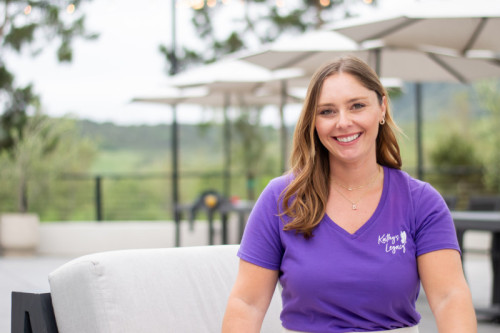
- Chronic Illness a Journey of Strength, Self-Discovery ... and SaltThe first time I rode in an ambulance was in May 2024. I was in the middle of my 10:30 a.m. Communication 200 class when I realized my vision and hearing were failing. I couldn't keep my legs or arms straight and I couldn’t speak. The full memory is hazy, but I found myself sitting outside of Crash’s Market in the University Student Union with a handful of salt packets and on a Facetime call with my parents, who live in Tennessee. This experience didn’t come out of nowhere. I have postural orthostatic tachycardia syndrome, or POTS, a chronic condition that I’ve lived with since my junior year of high school. There’s not a lot known about POTS, but it's a disorder affecting the autonomic nervous system. When I switch positions (postural) – especially when I go from sitting to standing upright (orthostatic) – my heart rate rapidly increases. On average, it's over 100 beats per minute (tachycardia). POTS leaves me with a slew of symptoms. Daily, I experience dizziness, nausea, fatigue and brain fog, among others. Some people who have POTS faint frequently, even daily. I'm lucky enough that this doesn't typically happen to me, but I do experience presyncope, which means I go through all the symptoms of passing out while still fully conscious. When it occurs, I'm not able to see, speak or hear anything. I’m so dizzy I can’t walk straight. I get heat flashes. I remember only bits and pieces of what happens during these moments. The severity of my symptoms can vary, leading to an episode like the one I suffered in May 2024. If I have been walking or standing for too long, sitting for too long, am stressed out or if it’s hot outside, there’s a higher chance of an occurrence. That day in May, while I was on the phone and sitting outside of Crash’s Market, my parents called the paramedics. Determining that I couldn’t walk anywhere on my own and wouldn’t be able to for several hours, they took me by ambulance to the emergency room at a nearby hospital. Though it was my first time in an ambulance, I had made frequent visits to the ER over the previous four years. The process this time was the same as it had been for prior trips: They measured my vital signs, checked my heart with an electrocardiogram and did blood work to confirm POTS as the reason for the incident. Then I received an IV. IVs have been incredibly helpful. People with POTS struggle with low blood volume and tend to get fewer nutrients from the food we eat. An IV provides quick hydration and extra electrolytes. I also constantly consume extra salt, which helps improve blood volume. I add salt to my food, but in extreme cases, I will just eat plain salt packets. At restaurants, I always take an extra handful of salt packets from the condiment stand. These live in my purse or backpack, and I keep them handy in case I feel an episode coming. Some of my friends even carry salt packets when they’re hanging out with me. Despite the challenges, I try to focus on the positives. This journey has taught me to advocate for myself and surround myself with people who care about me, which is easy to do at Cal State San Marcos. Self-advocacy became a necessity as I went through many months of doctors’ appointments during high school trying to figure out what was wrong. Several doctors said everything I was going through was normal. But I knew it wasn’t. I wasn’t officially diagnosed with POTS until two years after my first symptoms. I had COVID twice during that time, and doctors believe that may have exposed an underlying condition. POTS is a chronic illness, meaning there is no cure. I’m a regular at the doctor’s office, with multiple appointments every month. Attending events causes heightened anxiety – both for me and the friends I’m with – and I do my best to be prepared in case of an episode. I had to take another ambulance ride in March. A friend and I were at a Kelsea Ballerini concert in San Diego. Though I had been fine the whole day, I started feeling nauseous and dizzy during the first opening act. I couldn’t stand. By the time Kelsea took the stage, the combination of the heat, crowd and strobe lights proved too much. My friend had to help hold me up as she guided me down the stairs to find the medics. Situations like this are frustrating. I don’t want to be a burden to friends and family, and I don’t want friends constantly worrying or family having to pick up slack. I’ve made some lifestyle changes in an attempt to lessen my symptoms. I take daily medication to ensure that my body keeps the right balance of salt and water. I drink tons of water with extra electrolytes and salt added. I try to walk every day to get my body more adjusted to moving. On hot days, I carry a mobile fan. And I also make sure to eat well. When I decided to attend CSUSM, the Disability Support Services office proved invaluable – they set me up with first-floor housing so I could avoid stairs (and anyone who has spent time on campus knows it’s no easy task to avoid stairs at CSUSM!). I also have learned to be more open about my condition. Through my on-campus job as a writing intern in the University Communications office, I’ve made great friends and found people who understand and support me. The experience has been an important part of pursuing my goal of becoming a writer. While CSUSM has helped me grow, my family and I made the difficult decision for me to move back to Tennessee at the end of the spring semester to focus on my health. I’ve had my share of challenges, but I also know how difficult it has been for my family to get calls in the middle of the night to learn I’ve been taken by ambulance to the ER when they’re 2,000 miles away. Though I’m heading east to finish college, I’ll always be thankful for my time at CSUSM – for the friends I’ve made, the support I’ve received and the confidence I’ve gained in sharing my story. Media Contact Eric Breier, Interim Assistant Director of Editorial and External Affairs ebreier@csusm.edu | Office: 760-750-7314
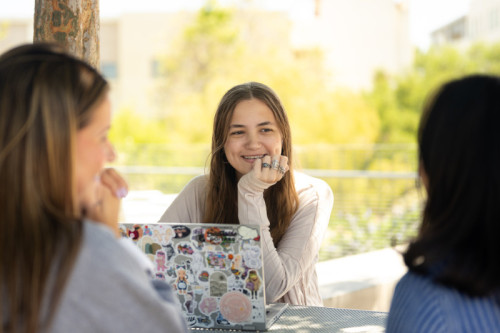
- Soccer Takes the Stage in 'The Wolves'The Cal State San Marcos theatre arts program will bring the complexities of teenage girlhood to the stage with “The Wolves.” The play, written by Pulitzer Prize finalist Sarah DeLappe, is a coming-of-age tale that follows a high school girls soccer team as players navigate degrees of adolescence, identity and growing up. Performances of “The Wolves” will take place in Arts 111 from Nov. 12-15 at 7 p.m. Tickets for students cost $10, while general admission tickets are $15. Through their interactions, rivalries and moments of vulnerability, the girls grapple with the nuances of teenage girlhood and the unspoken bonds that form within the team. Set entirely during pregame warmups, the performance captures the chaotic, overlapping conversations between players as they discuss everything from global politics to personal anxieties. To perfect the soccer moves in these moments, the actresses are being coached by Emily Mahmoud, a senior midfielder on the CSUSM women's soccer team. Media Contact Eric Breier, Interim assistant director of editorial and external affairs ebreier@csusm.edu | Office: 760-750-7314

- Firefighting Proves to Be ‘Hand-in-Glove Fit’ for GraduateDwaine Collier always has thought of himself as a guy who runs toward the frightening things that most people run away from. As a boy, his career aspiration was to be on a SWAT team. As a student at Cal State San Marcos, though his academic track early on was kinesiology, he gravitated to the theater and began auditioning for every high-pressure stage role possible. So when Collier was at a crossroads in his post-graduate life and his stepfather figure suggested that he explore firefighting, perhaps the most surprising aspect is that Collier had never thought of it himself. Who, after all, is more willing to charge headlong into a risky situation than a firefighter? “I’m the person who will stop their car on the side of a busy road to help somebody rather than driving on,” Collier said. “That’s just what I do. It’s what’s in me. So for me, this job is a hand-in-glove fit.” Collier was speaking from a common area inside San Diego Fire Station 43, which is in Otay Mesa and has been his home away from home for the past year. On this day in late April, he had donned his gear several times to go on calls in the station’s primary engine with his firehouse colleagues – a firefighter paramedic, an engineer and a captain. The calls were fairly routine. Because Station 43 is in a lightly developed neighborhood only a few miles north of the Mexico border, most of the emergencies that its crews respond to are vegetation fires, car fires and incidents at the border itself – often people sustaining injuries as they try to cross into California illegally. Collier, 29, is less than four years into his firefighting career, which translates into this current assignment far from the heart of San Diego. He has to gradually work his way up the ranks and into more plum stations. But Collier still loves where he is and what he’s doing. He gladly will show off for visitors every nook and cranny of Station 43 – from the exercise space where he gets to incorporate one of his favorite activities (weightlifting) into his work hours, to the kitchen where he frequently cooks meals for the whole house, to the cherry-red fire engine that he has come to know every inch of like the back of his hand. “Becoming a firefighter is one of the best decisions I’ve ever made,” he said. “It’s not an easy job. When the stuff hits the fan, it sprays everywhere. But it’s also one of the most rewarding things you can do.” It was at CSUSM that Collier discovered the stability and self-confidence that made life as a firefighter seem realistic. He grew up in the foster system and entered the university having attended an astounding 17 different schools before he even reached high school, Olympian in Chula Vista. He arrived at CSUSM with the assistance of ACE Scholars Services, the university’s program for former foster youth. Collier switched his major from kinesiology to visual performing arts and threw himself into theater with abandon, ultimately starring in seven shows during his five years as a student. “What CSUSM gave me is the belief that I can do anything,” said Collier, who graduated in 2018. “I came into college with extreme educational deficiencies. Yet CSUSM had every tool to catch me up and help me succeed. It gave me the environment to grow.” Collier intended to pursue a Master of Fine Arts and a doctorate en route to becoming a theater professor, but he admits that he didn’t prepare well enough for his graduate school auditions and was delivered a harsh “reality check.” He was teaching kids at Callan Swim School when his stepdad proposed what turned out to be a fateful visit to the Heartland Fire & Rescue station in El Cajon. He was a reserve firefighter there for a year before entering the San Diego Fire Academy in 2022. Now Collier aims to keep climbing the ladder – both literally and figuratively – as a firefighter while not pulling it up behind him. As soon as he joined the fire service, he got involved with community outreach as part of the team tasked with recruiting the next generation of firefighters. And his next goal is to take classes toward becoming an instructor of young firefighters eager to enter the fire service. “I feel like that’s my next calling,” he said. “I’m trying to figure out how to give back by motivating and helping others. It gives me joy to see people be uplifted and accomplish things.” Media Contact Brian Hiro, Communications Specialist bhiro@csusm.edu | Office: 760-750-7306
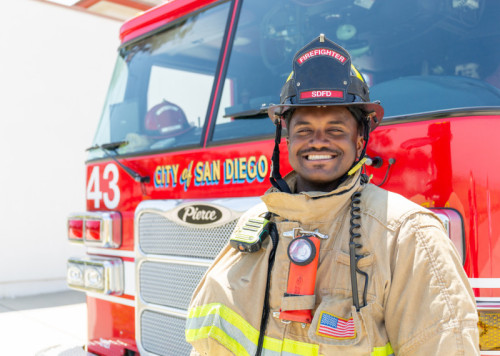
- $10,000 Stipend Available for Student Teachers in CaliforniaStudent teachers across California now have access to a new financial support program aimed at easing the burden of unpaid teaching hours required for credentialing. Signed into law on June 27, Assembly Bill 121 (AB 121) established the Student Teacher Stipend Program, which provides $10,000 stipends to eligible student teachers who complete at least 500 hours of student teaching. The program, which will go into effect for student teachers in the 2026-27 academic year, is designed to support future educators and strengthen the state’s teacher pipeline. The initiative is funded through the California General Fund, with $300 million allocated for the 2025-26 fiscal year. Beginning in 2026-27, up to $100 million annually may be made available, depending on future state budget appropriations. The stipends will be available to local educational agencies (LEAs) – including school districts, charter schools and county offices of education – that host student teachers, teacher residents or apprentices. Intern credential holders are not eligible. The program is non-competitive, meaning all eligible LEAs that apply will receive funding, subject to availability. LEAs apply through a streamlined online process managed by the Commission on Teacher Credentialing (CTC). In addition to supporting student teachers, LEAs may use stipend awards to offset wages for apprentices or support residents not funded through other residency programs. LEAs can apply through the CTC’s online portal. Each eligible student teacher receives a stipend of $10,000, paid during the year they complete 500 hours of student teaching. For more information, the commission has established a specific email box for questions: STSP@ctc.ca.gov. You also can contact Moses Ochanji, director of Cal State San Marcos' School of Education, at mochanji@csusm.edu. This stipend program represents a significant investment in California’s future educators and aligns with CSUSM's commitment to supporting students pursuing careers in education.
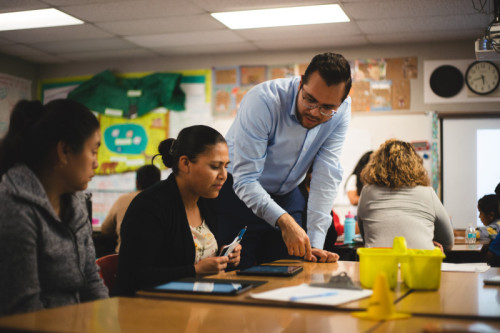
- Alumna Took Unorthodox Path to Leading Local Health Care StapleMichelle Gonzalez was a Cal State San Marcos student only about a month away from graduating in 2003 when she started working for an organization then called North County Health Services. Her degree (communication) was unrelated to health care, and Gonzalez had no intention of staying in the field. The main appeal of the job was that it was close to her home and the university. Beginning her journey as a program assistant in an entry-level role, Gonzalez quickly developed a fondness for the local nonprofit and its high-minded mission: providing quality health care and wellness services to underserved communities, regardless of income or insurance status. Her early connection to community health mirrored CSUSM’s commitment to accelerating social mobility through leaders who serve with purpose. What Gonzalez imagined to be a brief pit stop instead turned into a rewarding career, and over two decades, she climbed the rungs all the way to the top – she was appointed president and CEO in 2020, the same year that North County Health Services was reborn as TrueCare. With Gonzalez at the helm, TrueCare has expanded into a regional force with 21 health centers and five women, infants and children (WIC) locations, covering a footprint of more than 42 miles, from Encinitas to Ramona. Her leadership has driven key advancements, including the opening of new health centers, expansion of the mobile fleet and specialty services, implementation of an advanced electronic health record system, rebrand of the organization, and launch of a successful doula program supported by a $2 million federal grant. Question: This year marks the five-year anniversary of you becoming the leader of TrueCare. What does that milestone mean to you? Michelle Gonzalez: I think it's a reminder of how quickly time flies and how quickly things can change and evolve. It's hard to remember that we were in this worldwide pandemic. It feels like it's been a couple lifetimes. We've had a lot of growth for the organization, and I think at this five-year mark, it just underscores how resilient we are, how much people matter at the core of everything we do – whether it's providers, whether it's patients, whether it's the community, our staff. It's a culmination of the strength of the organization and everything that we've accomplished, which is a lot in the last five years. Q: How would you sum up the growth and changes that have occurred since 2020? MG: We've expanded our footprint. We've opened new sites, we've added new service lines, we've added acupuncture, we've added podiatry. We've really stabilized our workforce during a time of a lot of shortages and uncertainty. I’m proud of the fact that our provider retention rate is over 90%. We continue to hire at an accelerated pace, and I start there because everything we do, all the growth and all the accomplishments, it always starts with people. Without a solid workforce, we wouldn't be able to achieve anything. Our patient population has grown significantly as well. We had a slight decrease post-COVID, but we're back up to almost 70,000 patients. We've rendered more than 350,000 visits in this last year. Our workforce continues to grow. We're over 800 employees now and close to 160 providers. And then our budget has grown significantly, by almost $55 million in the last five years. We've tripled our mobile fleet. In all the areas of the business that you would expect to continue to progress, we're not only progressing, but we're thriving. Q: How did your appointment as CEO come about? MG: My predecessor went on a leave of absence in January 2020. The board asked me if I would be willing to step in on an interim basis. They were initially planning to do a national search, which I was fully supportive of. I didn't have any aspirations to be a CEO. I sometimes say I'm an accidental CEO. I was working in that interim capacity for several months, and then COVID made its presence known and we had the stay-at-home order. By April, the board had unanimously appointed me to maintain the position full term. After a lot of conversation and some prayer and reflection, I decided to pursue the position, and it's been a fantastic journey, in large part because I have such a great team around me. Q: What was the biggest challenge in taking over just as the pandemic was heating up? MG: There was so much uncertainty and fear. At one point, we had to close more than half of our clinics, probably 75-80% of our sites, we had to furlough staff. You think you can sort of ease in to becoming a CEO. There was no ease-in period. I remember talking with colleagues in the industry and saying, “How are you handling this? What are you doing?” And I realized very quickly that there's no playbook and everybody was truly figuring it out as they went along. Very early on, I made a conscious decision that I would be the type of leader who was always grounded and surrounded by strong advisers. We offer health care, but I'm not a clinician, so I made certain that we had strong clinical leadership on our team. It was about trying to understand what was unfolding in the world around us and how TrueCare plays an important part and ensuring that we were keeping our workforce intact. We’re back on track now, but it was an incredibly stressful time. Q: How did TrueCare pivot during that time and how does the organization look different now than it did in 2020? MG: Before the pandemic started, we had pieces of a telehealth or virtual health program. We realized very quickly that it would be crucial to continue to offer services to patients. For many patients, we are their lifeline, and cutting off their health care was not an option. So we were able to stand up a virtual health program in three days. It started off with telehealth visits and as soon as we were able to, we migrated to a video visit platform. We essentially worked around the clock to make sure that we didn't cut off access for patients, but it also gave employees a sense of purpose. And we've continued to build on that virtual health program while staying true to the traditional methods that you would expect to render medicine. We also had to pivot when it came to figuring out what our workforce was going to look like. We had to put people on furlough, but we made sure they still got a salary. We really believed that we needed to take care of our people, and a lot of funding from the federal government helped to shore us up. We laid off less than 15 individuals, and we were able to provide them with a severance so that they landed on their feet. I’m proud of that. Q: How would you characterize the change in you that turned TrueCare from a short-term job to more of a calling? MG: What I found was that people who worked here were very connected to the mission. They weren't here for the money. They were here because they cared about the people and patients that we were serving. The more I learned about the organization, the more in love I became with it and the more I realized, “My gosh, we have to make sure more individuals in the community and more community-based organizations know about what we do because there are so many people in need.” There was a misconception about people who were accessing care at community health centers, that they deserved less or they were just poor. I discovered that these are individuals who work very hard and who don't understand the importance of preventative care, and a lot of times don't feel like they're worthy of having access to care. What became a cornerstone of the work I did early on, and has carried on throughout my time here, is making sure everybody understands that access to health care is a right, not a privilege, and we don't care about your walk of life, where you come from or your circumstance. We want to make sure we help everyone who walks through our doors to the very best of our ability. Q: Tell me about your background. MG: I was born in Virginia, which is where my father is from. My mother is from Guam, and my parents met there while my dad was in the military. I'm half-Chamorro and half-white, and my husband is Mexican. We were childhood sweethearts who met when I was 12 and he was 14. I've had a lot of exposure to his family and culture over the years, and I think that's something that has benefited me very well. Though I'm not Mexican, I'm not Latina, I have such an appreciation for the culture and the people who we serve, which is the predominant background of our patients. My family traveled a lot while my dad was in the service. We moved to Vista when I was in third grade, and I've lived in North County pretty much my whole life. I'm also the youngest of seven children and the first in my family to go to college. So I'm a first-generation college graduate. Q: Did your parents not encourage college among your siblings? MG: We came from very humble beginnings, and I don't think we always understood that college was something within reach. My parents did the best they could to work and provide for us, but it was really the mindset of, you go to school and you get a good job. But my mom would say to me, “You're too smart, Michelle. You need to think about college.” I told her we couldn’t afford college, but she said we'll figure it out, we'll find a way. For most of the time that I was a student, I worked two jobs to put myself through school. I was also an AmeriCorps member, so I was able to receive a grant. But none of it came easy and none of it was without sacrifice or hard work – not just for me, but those around me who supported me. Q: What I'm hearing is a story of social mobility. MG: Oh, one thousand percent. I think that's why Cal State San Marcos and TrueCare are such great partners. We see health care as a right, not a privilege, and we think it's fundamental and foundational to everything. I think it ties in beautifully with social mobility. And there's so much good that is happening at Cal State San Marcos. There's a lot that we do together, and social mobility is a big part of that. Q: One of the main areas in which TrueCare and CSUSM have partnered in recent years is mobile health clinics. How did that come about? MG: Once I became CEO and started serving on the University Council, I learned about CSUSM’s interest in having a mobile health unit. I connected with (nursing lecturer) Matt Mincey early on and said, “You don't have to go on this journey alone. We have mobile clinics. We're right here, let's partner, let's figure out how to do this together.” What started out small has expanded into working not just with the mobile team, but also with the School of Nursing, public health, the entire College of Education, Health and Human Services. It’s a great opportunity to give exposure to students and help them understand that health care doesn't just come in a traditional hospital setting, that there's this whole other life of community health. There's a ton of overlap where our interests align nicely with what CSUSM is doing. We go to the same community events, and CSUSM students are able to do outreach, blood pressure screenings, things of that nature. Then, as they move farther along in their studies, when appropriate, they're also able to do internships at TrueCare. Q: How would you summarize TrueCare’s model in terms of providing health care? MG: One of the things I want to emphasize is that TrueCare will not refuse services to anyone regardless of their ability to pay. What we're focused on is the individual and the family who presents and what services you need, and how we can either provide those directly or connect you with somebody who offers them. At TrueCare, we provide high-quality, compassionate care. Like we always say, “Health inside, welcome in!” Q: That seems like such a valuable service in the community – health care you don't have to pay for. MG: In today's day and age, it sounds like something very novel. Does that really exist? And the reality is that it does. When you believe in your core that health care is a right and not a privilege, you fight to make that a reality. And that's what we're doing. We're growing in all possible ways and we're maximizing wherever we can, in terms of the revenue we're able to generate. We take that and we pour it right back into the organization so that we can continue to expand our footprint. We put a lot of emphasis on making sure we can get people enrolled in coverage because we know that if you have coverage, that's a reduced barrier and you're more likely to access health care. But that's not the only barrier you will have to face and figure out. We also spend a lot of time and resources and energy in cultivating a fantastic culture internally. We believe that people who are joyful at work are more likely to do a better job and will pour that energy back into our patients and community. We make it a priority to care for our workforce, to really give them opportunities to advance, to grow and level up. What we find more and more often is that our patients are a direct reflection of our staff, and our staff is a direct reflection of our patients. Pouring into one is pouring into the other, and we're proud of that because health care is daunting – not just for the patient in terms of navigating, but it's also really hard work. One of our VPs many years ago said, “Michelle, we do noble work.” And I was like, “Yeah, this is noble work.” That's exactly what we do. Media Contact Brian Hiro, Communications Specialist bhiro@csusm.edu | Office: 760-750-7306
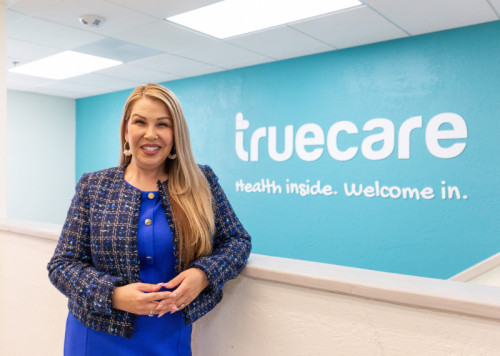
- The Makery Hosts Art and Mental Health WorkshopsCal State San Marcos’ Student Health & Counseling Services (SHCS) hosted its annual Real Monsters Art Exhibit at The Makery on Oct. 8. Displaying artwork by artist Toby Allen, the exhibit represented different mental illnesses depicted as monsters. The event included interactive art activities to showcase how creative expression can help make sense of mental health issues. Located on the second floor of Kellogg Library, The Makery is a place for students to exercise creative freedom and explore new skills using a variety of tools and materials. In partnership with the HOPE & Wellness Center at SHCS, The Makery will be hosting art and mental health workshops to enhance students’ mental well-being and connect them to mental health resources. During the most recent workshop, students created their own “monster” symbolizing their individual mental health experiences and struggles. Once the crafting was done, the students could share what they felt comfortable with about their monsters. The workshop was led by Anahi Martinez Mendez, a Master of Social Work graduate assistant, and Madison Di Palermo, a peer lead health educator. The workshops give students the opportunity to process and express emotions and experiences that are often hard to put into words by using art. They also help students find community with one another and receive help whenever they need it. Media Contact Eric Breier, Interim assistant director of editorial and external affairs ebreier@csusm.edu | Office: 760-750-7314

- Opportunity Knocks: Physics Grad Co-Founds Thriving CompanyMadison Perry didn’t have any type of physics background when he wandered through Science Hall 2 looking for research opportunities after his first year at Cal State San Marcos. Perry wasn’t worried about pay or even the tasks he would be doing. He simply wanted an opportunity to gain some hands-on experience. It wasn’t an easy sell, even if CSUSM is known for high-impact, experiential learning. Perry wasn’t a physics major (he was studying mathematics at the time), and he didn’t have any lab experience. Perry wasn’t having much luck when he knocked on the door of physics professor Stephen Tsui. “He just said, ‘Sure, why not?’ ” Perry said. The simple gesture was the catalyst for Perry’s switch to physics and the beginning of his journey to co-founding TP Engineering Services, a Poway-based company that builds laser and electro-optic systems for defense and fusion applications. The company has flourished since its founding in 2017, but a fusion contract that it secured three years ago has accelerated its growth. “It’s pretty insane to think about us getting to this point already,” Perry said. “Did I ever think we'd get here? Yeah, but I had no idea what it was going to look like, and I had no idea how it was going to happen.” The experience is similar to the one Perry had at CSUSM, where he practically lived in Science Hall 2 as a student. In fact, he was there so early and so late that the physics department eventually entrusted him with keys and after-hours access to conduct his work. “That was my thing – just being in a lab setting, being around hardware, being around something that was tangible, something that wasn't just theoretical,” he said. “It was where I could put my hands on hardware and get some experience.” After graduating in 2016, Perry headed north to UC Santa Cruz, where he earned a master’s in phototonics. His master’s thesis – on the design and development of a deep ultraviolet fiber laser system – caught the eye of a defense contractor who funded the project, leading to the formation of TP Engineering with his mother and father. TP Engineering quickly grew from an optics table in Perry’s bedroom where they navigated every project to the Poway lab it calls home today. The company has expanded from the initial trio of co-founders to over 20 employees, including two from CSUSM. The university still holds a special place in Perry’s heart. It’s where he met his wife, Amanda, who earned a bachelor’s in kinesiology. More than a decade after they met while both lived on campus in the University Village Apartments, they welcomed daughter Elli, who will be 3 years old in December. And he still returns to campus every year for Super STEM Saturday, an annual one-day science festival that brings thousands of community members to campus. A longtime supporter of CSUSM Giving Day, Perry increased his contribution last year with a matching gift for the physics department. “He's an alum who really believes in giving back,” Tsui said. “It's nice that so many of our graduates remember us so fondly and want to see younger alums and students do well.” That’s certainly the case for Perry. He doesn’t take for granted the impact that people like Tsui had on him and his career. “CSUSM took a chance on me a long time ago, and I want to support them being able to give other students a chance as well,” Perry said. “My professors gave me a unique perspective on life. If Dr. Tsui hadn't given me that opportunity to work in his lab, I don't know if any of this would have happened. They gave me a chance, and that changed me forever.” Media Contact Eric Breier, Interim Assistant Director of Editorial and External Affairs ebreier@csusm.edu | Office: 760-750-7314
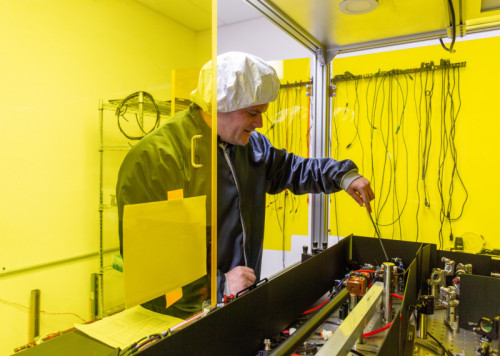
- Faith, Resilience Help Athlete Through Life-Threatening CrisisIt all started with a headache. A seemingly normal ailment, but Malachi Wright doesn’t get headaches. And he definitely doesn’t get headaches that force him to leave work early or have him confined to the couch and throwing up for three straight days. That's when his mom, Ivonne Mancilla, knew this was something more. It was the summer of 2023. Wright – who had just completed his second year at Cal State San Marcos, where he plays for the men’s soccer team – was experiencing pain like he had never felt before. “He has a high pain tolerance,” Mancilla said. “I started noticing how much he was sleeping and how he was walking very fragile. I realized it wasn’t a normal headache.” On the third day of the headache, Mancilla took Wright to urgent care. Doctors treated it as a migraine, giving him some medication and sending him home. But the pain continued to be unbearable. Wright told his mom that he felt like he was dying. On day four, Wright went to the emergency room. It saved his life. Wright spent the next 40 days in the hospital, undergoing three brain surgeries with no idea what the future would bring. No certainty if he could return to school, let alone soccer, his passion from the time he was a young child. But Wright defied all odds. “I hope to get my story out to people so that they can see anything is possible,” Wright said. “I am trying to bring people inspiration and give glory to God. That was my thing in the hospital, having faith and staying faithful to God, knowing that I'll be OK and he's got me.” Wright was guided by his faith throughout his hospital stay. He and his mom prayed throughout the journey, and she kept a bible verse at the edge of her son’s bed that they read every day as he fought for his life. It’s Psalm 30:2: Lord my god, I called to you for help, and you healed me. Those prayers began virtually the moment Wright arrived at the emergency room. A CT scan showed that his brain was filling with fluid, and an MRI revealed a cyst in the third ventricle of his brain. When a neurosurgeon came to review Wright’s scans, she was horrified. No one had informed her of his highly critical state. He was dying. “They said his brain was like a balloon and that it could burst at any moment,” Mancilla said. “I had to sign a paper giving them permission to go in and drain his brain immediately because he could have brain damage or die.” There was not space available or time to get Wright into an operating room. Instead, ICU nurses rushed into his room to assist the neurosurgeon, who numbed and drilled a hole in Wright’s head to drain the fluid. Doctors initially wanted to place a permanent shunt in Wright’s brain. Mancilla was a fierce advocate for Wright throughout his hospital stay, earning the nickname “Bulldog” from nurses. She was resistant to the shunt, worried it would affect Wright's ability to pursue his dream of becoming a firefighter. After she expressed her concerns, the lead neurosurgeon opted for a temporary shunt instead. Wright was in and out of consciousness for much of his time in the hospital, but a strong support system – including his mom, his aunt Vanessa, members of the family’s church, and coaches and teammates from CSUSM’s soccer team – played a crucial role in helping him through the process. The constant stream of visitors led Mancilla to discover the positive impact that Wright has had on so many people. His manager at Casero Taqueria, where he still works, reached out to Mancilla asking for permission to start a GoFundMe. The community raised $14,000, the exact amount needed to cover the family’s maximum out-of-pocket medical costs. “I didn't realize how many people Malachi has impacted,” Mancilla said. “Sometimes as a parent, you don't get to see all that until these types of things happen. Sometimes we focus a little too much on what they're doing wrong and not on all the other good things that they're doing that maybe they don't tell you about. “I told him, ‘This is all because of the seeds that you've planted out in the world, and this is how it's all coming back to you. So continue to be who you are.’ I am so proud of that. I was such a proud parent.” Wright endured three brain surgeries during his hospital stay. The first removed the majority of the cyst, the second cleared residuals of the cyst and the third addressed blood clots. It was a physically and mentally draining process. After the first surgery, Wright was temporarily paralyzed on his left side. He couldn’t sleep and was in constant agony. “It was the worst pain I felt in my life. It was excruciating,” Wright said. “It was really hard. I was confused, wondering where I was. It was a lot of scary stuff.” It wasn’t until Wright’s 35th day in the hospital that Mancilla felt like her son would be OK. His pain levels were reduced and he could walk again. But the biggest sign to Mancilla that Wright was doing better? He asked for his phone, which he hadn’t been able to use for most of his hospital stint. Though Wright’s pain was finally under control, other challenges remained once he left the hospital. He underwent cognitive, physical and speech therapy. Doctors expected the recovery process to take two years, but Mancilla knew her son had the fortitude for a quicker recovery. She could see that Wright was capable of more than he was initially allowed to do in the rehabilitation process, and her tireless advocacy paid off. Wright returned to CSUSM in the fall of 2023, just months after his hospital release. He eased back in by taking one class before increasing his load to three courses in spring 2024. He is grateful for the support he received throughout this time from coaches, teammates and athletic department staff, also noting the important role that CSUSM’s Disability Support Services played in helping him return to the classroom. A little more than a year after his three surgeries, Wright was back as a full-time student and soccer player. Wright didn’t just settle into classes, he thrived in them. He received a 4.0 grade-point average, making him the highest academic performer on the soccer team. “Not only did he heal perfectly, he's a better version of himself,” Mancilla said. “He turned something that caused him so much pain into good. He continues to make good choices for himself. He uses that painful experience and turns it into good.” That includes his efforts on the soccer field. Returning to the sport he loves was an impressive milestone for Wright, especially because it was considered virtually impossible just months earlier. Perhaps the most powerful moment of the 2024 season came in a match against Biola University. As the first half was winding down, Wright scored his first goal since the health scare. Mancilla, who never misses a game, ran down to the field. Coaches welcomed and hugged Mancilla as she rejoiced over the milestone. “It was a great, raw moment of emotion, love and gratitude,” said Ron Pulvers, CSUSM’s men’s soccer coach. “An experience I will never forget. “Malachi is a tireless worker in all aspects of life. He lives our core value of unconditional gratitude at the highest levels and lives his life with unequalled faith.” Wright is back on the field this fall as he continues work toward a bachelor’s degree in human development. He is scheduled to graduate in fall 2026, with an ambition of becoming a firefighter. While his time spent in the hospital was scary, the support he received helped him overcome adversity and his faith helped him remain positive. He now uses his experience to encourage others and push himself to perform the best he can. “People meet Jesus at the end of the rope. And that was the end of my rope,” Wright said. “Going through this whole experience with my brain really changed my perspective on life and it changed my character as a man.” Media Contact Eric Breier, Interim Assistant Director of Editorial and External Affairs ebreier@csusm.edu | Office: 760-750-7314
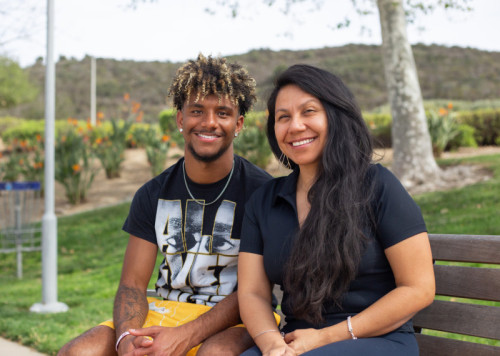
- CSUSM to Host Annual Workshop for Future Arts EducatorsCal State San Marcos next month will host its third annual workshop to introduce students to the path to becoming an elementary or secondary school arts teacher. “Become an Arts Teacher Day” will take place on Saturday, Nov. 8 from 10 a.m. to 1 p.m. in the Arts Building on campus. The free event will bring together students and community members to participate in arts activities and listen to guest educators speak about arts teaching. They also will learn more about the steps needed to apply to the multiple subject credential program. The workshop is part of the Arts Credential Pathway Project, a collaboration among CSUSM’s School of Arts, School of Education and Center ARTES. Founded in 2023, the project was developed to address the shortage of visual and performing arts teachers in California, and to provide an arts credential pathway at CSUSM that can be duplicated on other campuses. CSUSM professors in music; dance; art, media and design; and education have worked for multiple years to build and implement arts credential opportunities for CSUSM students. Students wanting to pursue this pathway though CSUSM can apply to the School of Education’s multiple subject credential program. Once accepted, students who want to teach in the arts can apply to the CREATE Teacher Residency Program. The program supplies a stipend and financial support, hands-on experience, arts mentorship, a consistent cohort of peers, professional development and networking, priority job interviews, and more. To learn more, students can contact their art discipline’s Arts Credential Pathway Project representative or visit the teaching credential program website. Media Contact Brian Hiro, Communications Specialist bhiro@csusm.edu | Office: 760-750-7306
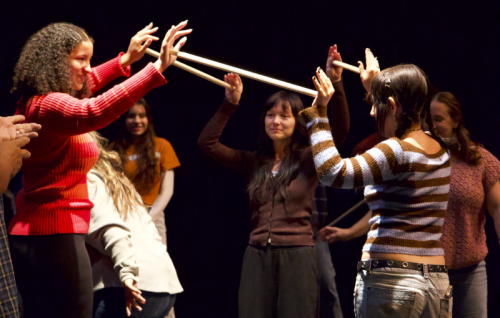
Load more...
Loading...


